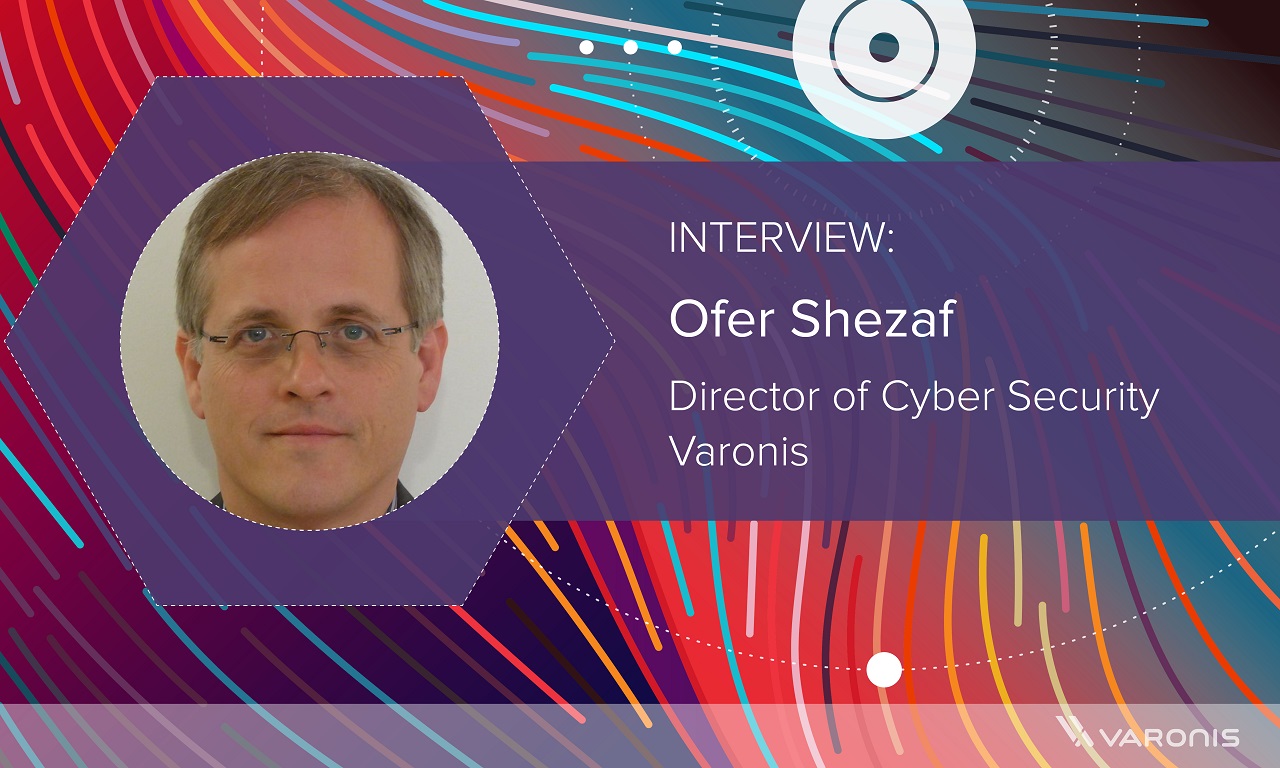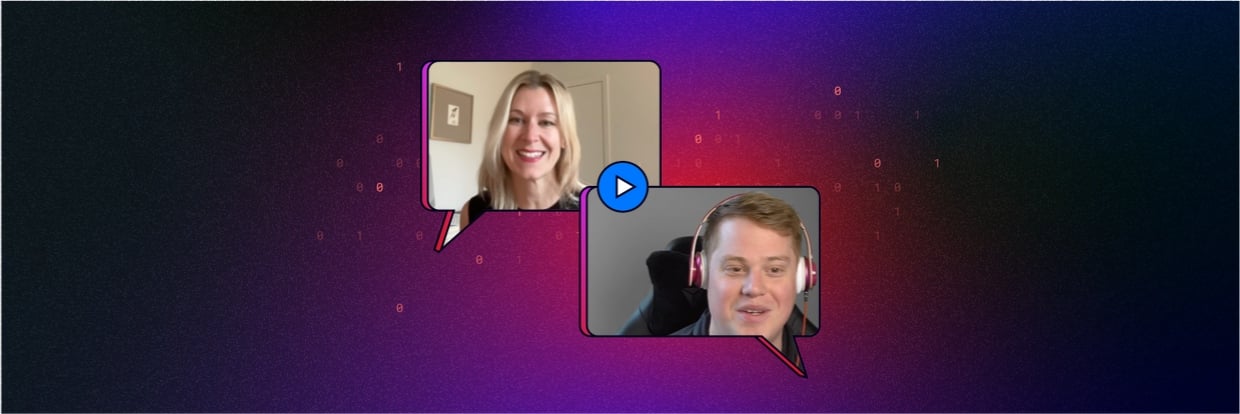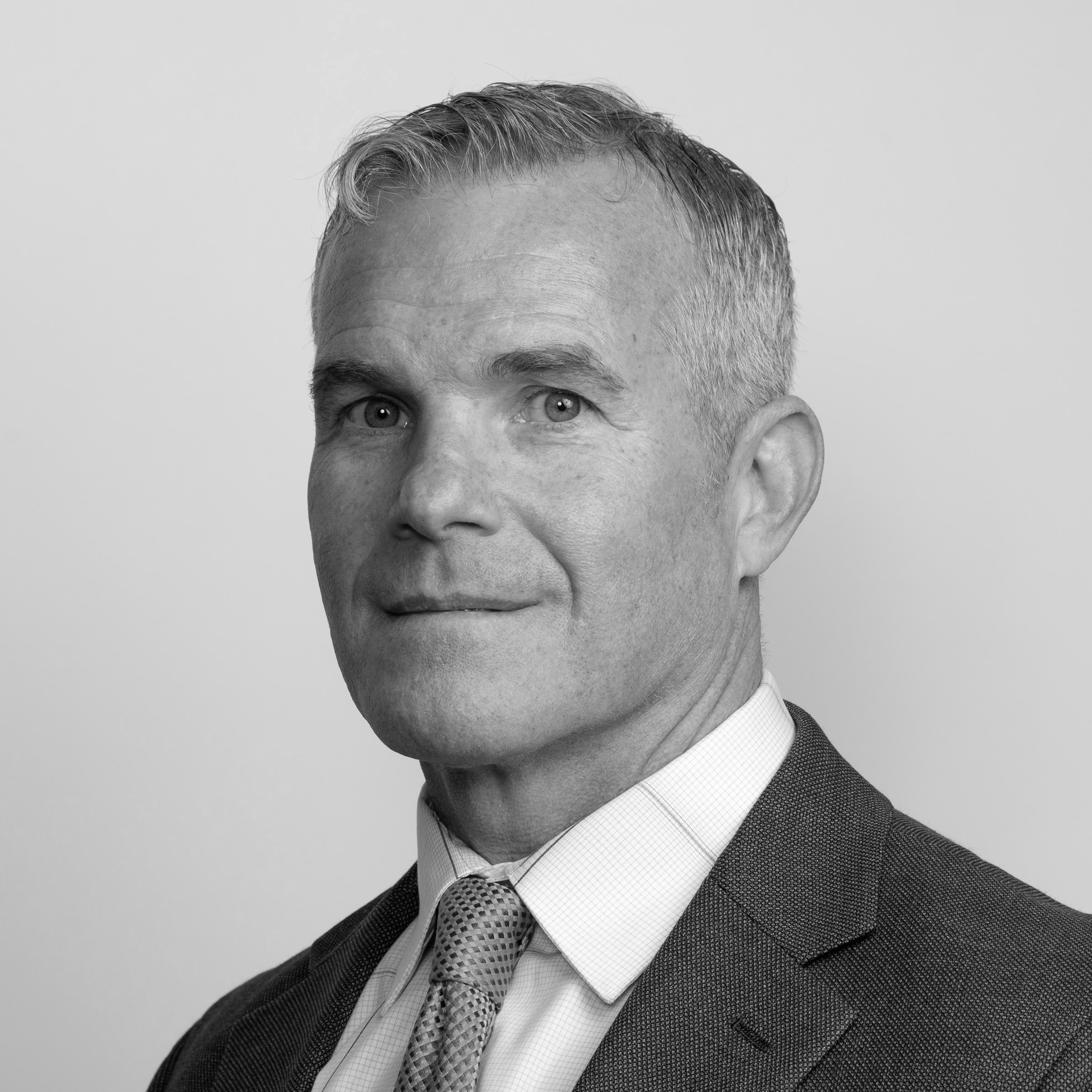This article is part of the series "[Podcast] Varonis Director of Cyber Security Ofer Shezaf". Check out the rest:
Inside Out Security: Today I’m with Ofer Shezaf, who is Varonis’s Cyber Security Director. What does that title mean? Essentially, Ofer’s here to make sure that our products help customers get the best security possible for their systems. Ofer has had a long career in data security and I might add is a graduate of Israel’s amazing Technion University.
Welcome, Ofer.
Get the Free Pen Testing Active Directory Environments EBook
Ofer Shezaf: Thank you.
IOS: So I’d like to start off by asking you how have attackers and their techniques changed since you started in cyber security?
OS: Well, it does give away the fact that I’ve been here for a while. And the question is also an age-old question, and people will say that it’s an ever-evolving threat and some would say just the same time and time again.
My own opinion is that it’s a mixed bag. Techies would usually say that it’s all the same as usual. Actually, the technical attack vectors tend to be rather the same. So buffer overflows have been with us for probably 40 years, and SQL Injection for the last 20.
Nevertheless, everything around the technical attack vectors does change. And I think that the sophistication and the resources that the dark side is investing — it always amazes me how much it’s always increasing!
When Stuxnet appeared a few years back, targeted, you know, nuclear reactors in Iran, I thought it was just, you know, a game changer. Things will never be the same!
But today it seems to be that every political campaign tends to utilize the same techniques, so it’s amazing how much the bad guys are investing into those hacks. And that changes things.
IOS: Do you have any thoughts on the dark web, and now this new trend of actually buying productized malware? Do you think that is changing things?
OS: It certainly does change things. To generalize a bit, I think that the economy behind hacking has evolved a lot. It’s way more of a business and the dark web today is not a dark alley anymore. It’s more like a business arena.
And if you think about it, ransomware, which is a business model to make money out of malware, is using the same technical techniques as malware always did. But today’s dark web, the economical infrastructure of Bitcoin enables it to be a real business, which is where it becomes riskier and more frightening to an extent.
IOS: At Varonis, we have obviously been focusing on … that attackers have had no problem or less problems than in the past of getting inside. And that’s basically through phishing and some other techniques.
So do you think that IT departments have adapted to this new kind of threat environment where the attacker is better able to sort of get in, you know, in through the perimeter, or they have not adapted to these kinds of threats?
OS: So I must say I meet a lot of people working in IT security. And there are some smart guys out there. So they know what it’s about — we are not blind as an industry to the new risks. That said, the hackers are successful which implies that we are missing something! Based on results, we lose.
The question why this sort of misalignment of capabilities and results, is the million-dollar question. My answer is a personal one: we don’t invest enough … I mean, it’s a nine-to-five sort of job to be an IT security, and it tends to be a lot more like policing, like physical security. We need to be into it. I coined the term for that. We need … to do continuous security, as you think the army or military or police would do.
IOS: We spoke a little bit before this and you had talked about I guess Security Operation Centers or SOCs. So is that something you think that should be more a part of the security environment?
OS: Yeah. I mentioned continuous security but it’s just a term, and it might be worth sort of thinking about what it actually implies for an organization. So SOCs have been around for a while, Security Operation Centers. But they tend to, well, not take it all the way.
I think that we need to have people sitting there really 24-7 even in smaller organizations because it’s becoming, you know… You have a guard at the door even in smaller organizations. So you need someone in the SOC all the time.
And they don’t need just to react. They need to be proactive.
So they need to hunt, to look for the bad guys, to do rounds around the building if you think about it in physical terms. And if we will do that, if people will invest more time, more thinking … they’ll also feedback into a technical means which are our primary security tool today.
IOS: Ofer, we often see a disconnect between the executive suite and people doing data security on the ground. Maybe that’s just appearing with all the breaches in the last few years. I’m not sure. If there are one or two things you could tell the C-level about corporate data security, what would they be?
OS: So I did mention one, which is how much we invest. I think there’s under-investment and investment, at the end of the day, is in the hands of the executives.
The other thing is rather contradictory maybe but it’s important and that’s the fact that there is no total security … The only system which is entirely secure is a system which has no users and doesn’t operate. So it’s all about risk management. If it’s about risk management, it implies that we have to make choices and it also implies that we will be hacked.
And if we will be hacked, we need to make sure it’s less informed systems and we also have to make sure that we have the right plans for the day after. What will we do when we are hacked?
So things like separating systems that are important, defining what are the business critical systems, those that your stock would drop if they are hacked and those that are peripheral, and important but less.
IOS: So we’ve often talked about Privacy by Design on the iOS blog, but the term as you told me is actually is older. It’s really… I mean, that phraseology…that phrase is old. It really comes out of Security by Design which is more of a programming term. And that really means that developers should consider security as they’re developing, as they’re actually making the app.
I was wondering if this approach of Security by Design where we’re actually doing the security from the start will really lessen the likelihood of breaches in the coming years. Or will we need more incentives to get these applications to be more secure?
OS: So we are moving from operational security, which is after systems are put in place and then it will be protected, into designing their security upfront before we start deploying them. So it’s … the other part. I spent many years in applications security, which is right around that.
And I think that the concept of baking in security into the development process makes sense to everyone. It saves on later on because you don’t have to fix things when they’re found, and it also has the benefit of making systems more secure.
That said, it’s not a new concept. I mentioned that Security by Design is term that’s used for a decade-and-a-half. It doesn’t happen enough and the question is why? Why is Security by Design not happening as much as we would like it to be and how to make it better?
And I think that the key to that is that developers are not measured by security! They are measured by how much they output in terms of functionality. Quality is important but it’s measured in terms of failures rather than security breaches. And security is someone else’s problem so it’s not the developer problem or the developing manager problem.
As long as we don’t change that, as long as they don’t think of security as an important goal of the development process, it would be a leftover, something done that is an afterthought.
IOS: Well, it sounds like we may need other incentives here. And so for example, I can go to a store and buy a light bulb, and I know it has been certified by some outside agency. In the United States, it’s Underwriters Lab. There are a few others that do that.
Do you think we may see something like that, an outside certification saying that this software meets some minimal security requirements?
OS: So it goes back to compliance versus real security … I think compliance and regulations are important for market deficiencies. So when things do not work because they aren’t the right incentives, so it’s an important starting point.
That said, they are there, they’re just not providing enough. They’re also not, today, targeted specifically at the development phase, and in most cases, they are taken to be part of the operational phase, which is later on.
So it will be an interesting idea to try to create a development process for specific regulations. It’s harder because we make end-result regulations … we don’t make good software requirements!
That said, I’ve once seen an interesting demonstration. Somebody created a label for software, which is like the label you have on food, with the ingredients saying how much, you know, how much SQL injections it might have and how much cross-site scripting it might have, as you would have for sugars and fats …
IOS: It is quite an interesting idea! At the blog, we’ve written a lot about pen testing, and actually, we’ve also spoken to a few actual testers. You know, obviously, this is another way to deal with … improving security in an organization. I’m wondering, how do you feel about hiring these outside pen testers?
OS: So first of all, by definition, it’s the opposite of Security by Design. It usually comes in later in the game once the system is ready. So if I said I believe in security by design then pen testing seems to be less important. That said, because Security by Design doesn’t work well, pen testing is needed. It’s very much an educational phase where you bring people in, and they tell you that you didn’t do right.
Why I don’t see this as more than educational? First, because pen testers usually are given just as much time as was allocated. You know, it’s money at the end of the day, and today the bad guys are just investing more.
It’s not a holistic way to make the software secure, it’s an … opportunistic one, and usually it gets some things, but it doesn’t get all the things … It’s good for education — would show there is an issue — but it’s not good enough to make sure that we are really secure.
IOS: That’s right
OS: That said, it is important … Two things which are important when you do pen testing. The first one is since pen testers find just some of the issues, make sure that those are used to create a thought process around the larger challenges of the software!
So if they found a cross-site scripting in a specific place, don’t just fix this one, fix all of the cross-site scriptings … or think why your system was not built to overcome cross-site scripting in the first place. Take it [as a] driver for security by design.
As an anecdote, I once met an organization where a pen tester came in, he found cross-site scripting. He demonstrated it by having the app popping up a “gotcha” dialogue. And two weeks later, the developers came back and said they fixed it. It doesn’t happen anymore, and what they did was just to check for the word “gotcha” in their input and block it, which is…it does happen, unfortunately!
And beyond fixing this …,it would be well if you have pen testing and they found cross-site scripting, fine, think of why your system, in the first place, was not built to handle those across the board.
The second thing that’s very important is pen testing is usually done very late in the development lifecycle. And too many times, there’s just not enough time to fix things. So making it earlier, making part of the, you know, test as models are released rather than last moment, will ensure that more can be fixed before launch … those systems are less vulnerable.
IOS: We also know that Microsoft has started addressing some long-standing security gaps … starting with Windows 10. There’s also a Windows 10 S, which is a Microsoft’s special security configuration for 10. I was wondering if you can tell us what 10 S is doing that may help organizations with their security.
OS: So Microsoft 10 S is the whitelisting version. If you think about security, there are two options to secure things and nearly every security system selects one. One of them is to allow everything in general and then try to block what’s dangerous, okay? An anti-virus would be a good example. Install whatever you want to install and then the anti-virus will catch it if it’s a virus.
The second option, whitelisting is always more secure, but always limits functionality more. Windows 10 S takes this approach. It limits installing software, only things that actually come from the Microsoft App Store.
So it’s way more limited, functionality speaking, sort of feels as it is less of a full system. And personally, you know, [as] an IT guy being here for quite a while, it feels too limited for me. But looking at how — you know, my kids are using computers — how, you know, general office workers are using computers, it might be just enough.
So it might be a good choice by Microsoft to create those limited versions that are secure by design because they allow just as much rather than blocking what’s wrong.
IOS: Right. If I understand what you’re saying, it would prevent, let’s say, malware from being loaded because the malware wouldn’t have been signed, so it wouldn’t have been loaded on the actual whitelist of …
OS: It’s not just signed, it’s actually downloaded from Microsoft App Store, so it’s way more … Signing exists to Windows today as it’s the next step.
IOS: So then it would really prevent anything from being…any outside software from being loaded. Okay. And … is there a performance penalty for that?
OS: As far as I know there is no performance penalty. In a way, the same… having more security in this case might actually improve security and stability because unpredicted software is also a challenge for performance and stability. The downside is functionality.
IOS: Right. We know from security analysts, hackers and the cybercriminals have targeted executives, they call it, you know, spear phishing or whale phishing and, you know, they have the more valuable information compared to the average employee.
So it will sort of make sense to actually target these people. I was wondering if you think that executives should receive extra security protections or they should take extra precautions in their dealings with, you know, just in their day-to-day work on the computer?
OS: So in a way, you said it all, because we do know that executives are targeted more, so we need to focus on securing them. We do it in the real world … drawing parallels with the physical security world, so it does make sense. … A lot of our security controls are automated, and when it’s automated, if you invest in detecting that somebody is posing as the user, why stop at executives?
So my take on that would be, make the automated detection systems address any user, but then focus. It still gets to incident response team that has to assess whether it’s the risk is there and what to do. They can prioritize based on the type of the user– executives being one type of sensitive user, by the way. Of course, admins are another type.
IOS: Yeah, I mean, I could almost imagine a, I guess, like a SOC having a special section just focused on executives and perhaps looking at … any kind of notifications or alerts that come up from the, you know, the standard configuration. But actually, digging a little deeper when those things come up with the executives.
OS: Yes, if you think about it, the major challenge of a SOC is handling the flow of alerts. And any means that will enable them to be more efficient in ending alerts, focusing on those that are more critical to the business where the risk is higher, is important. Executives are a very good example.
So just pop up the alerts about the executives to the top of the list, and the analyst gets to them first and he’s doing something reasonable…He is more valuable to the organization.
In fact, so there is no 100% security! Some incidents or alerts would be left.
IOS: One last question. Any predictions on hacking trends in the next few years? I mean, are there new techniques on the horizon that we should be paying closer attention to?
OS: Oh, it’s a crystal ball question. It’s always hard. I’m probably wrong, but I’ll say I’ll try.
So the way to look into that, the way to try to predict is that I found out that hacking techniques usually trail changes in the IT technology. Hackers become experts in the new technology only a year or two or even more than that after the technology becomes widespread. In this respect, I think that mobile is the next front.
We all use mobile, but actually, business uses mobile … which is rather new, Salesforce Mobile App. In the last of couple years, we can actually do more work on the mobile device, which means it’s a good target for malware. And I think we’ve seen malware for any mobile, but we still didn’t see financial or enterprise malware as ransom or for mobile, for example, and that will be coming.
IOS: And what about Internet of Things — it is kind of somewhat related to mobile — as a new trend? Are we starting to see some of that?
OS: Yes, it’s an area where we’ve seen two things. First of all, a lot of research, which always comes before actual real-world use. If you look at what researchers are doing today, you know what hackers will do in two or three years!
And after today, we’ve seen mostly a denial-of-service attacks against, you know, Internet of Things devices where they were … taken off the network.
It would be interesting — it would be frightening actually — once the bad guys start to do more innovative damage by taking over devices. You know, cars are a very frightening example, of course, traffic lights, electricity controllers, etc.
That said, the business model is the driving factor. And I still don’t see — unlike, for example, malware for mobile or a malware over on cloud systems — the business model, apart from nation states, around the Internet of Things.
IOS: It’s interesting! So, Ofer, thank you for joining us. This was a really fascinating discussion, and it’s good to get this perspective from someone who’s been in the business for such a long time.
OS: Thank you. My pleasure as well.
What should I do now?
Below are three ways you can continue your journey to reduce data risk at your company:
Schedule a demo with us to see Varonis in action. We'll personalize the session to your org's data security needs and answer any questions.
See a sample of our Data Risk Assessment and learn the risks that could be lingering in your environment. Varonis' DRA is completely free and offers a clear path to automated remediation.
Follow us on LinkedIn, YouTube, and X (Twitter) for bite-sized insights on all things data security, including DSPM, threat detection, AI security, and more.








-1.png)